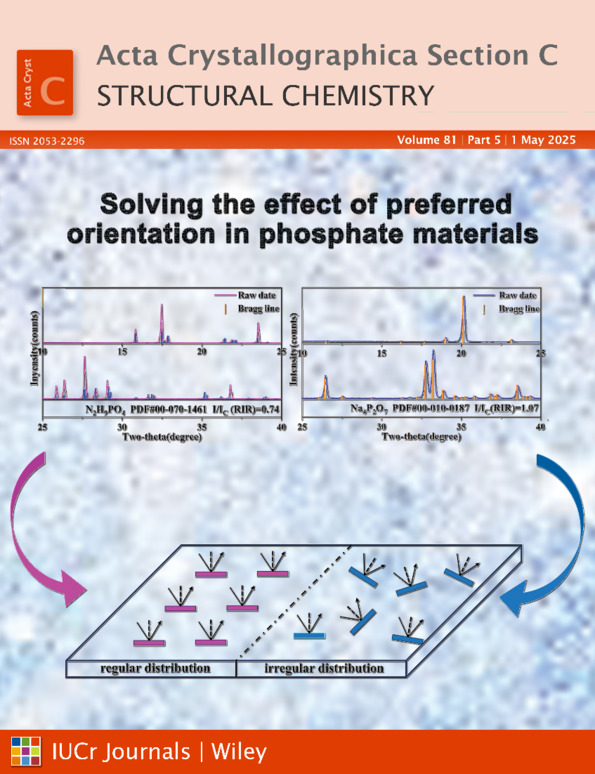Structure, intermolecular interactions and charge-density distribution of 2-amino-4-methoxy-6-methylpyrimidine with methylsulfamic acid and 4-hydroxybenzoic acid: a combined experimental and theoretical study
Abstract
The salts 2-amino-4-methoxy-6-methylpyrimidinium N-methylsulfamate, C6H10N3O+·CH4NO3S−, I, and 2-amino-4-methoxy-6-methylpyrimidinium 4-hydroxybenzoate, C6H10N3O+·C7H5O3−, II, have been synthesized and characterized by single-crystal X-ray diffraction. The protonation process takes place in both salts from acid to base. In both salts, the ring and amine N atoms, and the sulfoxide and carboxylate O atoms form eight-membered R22(8) ring motifs. The nature of the different types of interactions present in the crystals have been explored using Hirshfeld surface analysis. The percentage contributions of the different interactions in the crystal structures have been calculated using 2D fingerprint plots. The volumes of the voids present in salts I and II are 233.25 and 398.48 Å3, respectively. The band gap energies (ΔE) of salts I and II are 3.2022 and 3.5357 eV, respectively, as calculated by frontier molecular orbital (FMO) analysis. In Bader's quantum theory of atoms in molecules (QTAIM) analysis, the values of the electron density [ρ(rcp)] and the Laplacian of the electron density [∇2ρ(rcp)] at the protonated region of salt I are 0.261 e Å−3 and 2.889 e Å−5, respectively, and for salt II are 0.357 e Å−3 and 3.2 e Å−5. The pharmacokinetic properties and drug-like nature of the salts were confirmed by in-silico ADME (Absorption, Distribution, Metabolism and Excretion) prediction.




